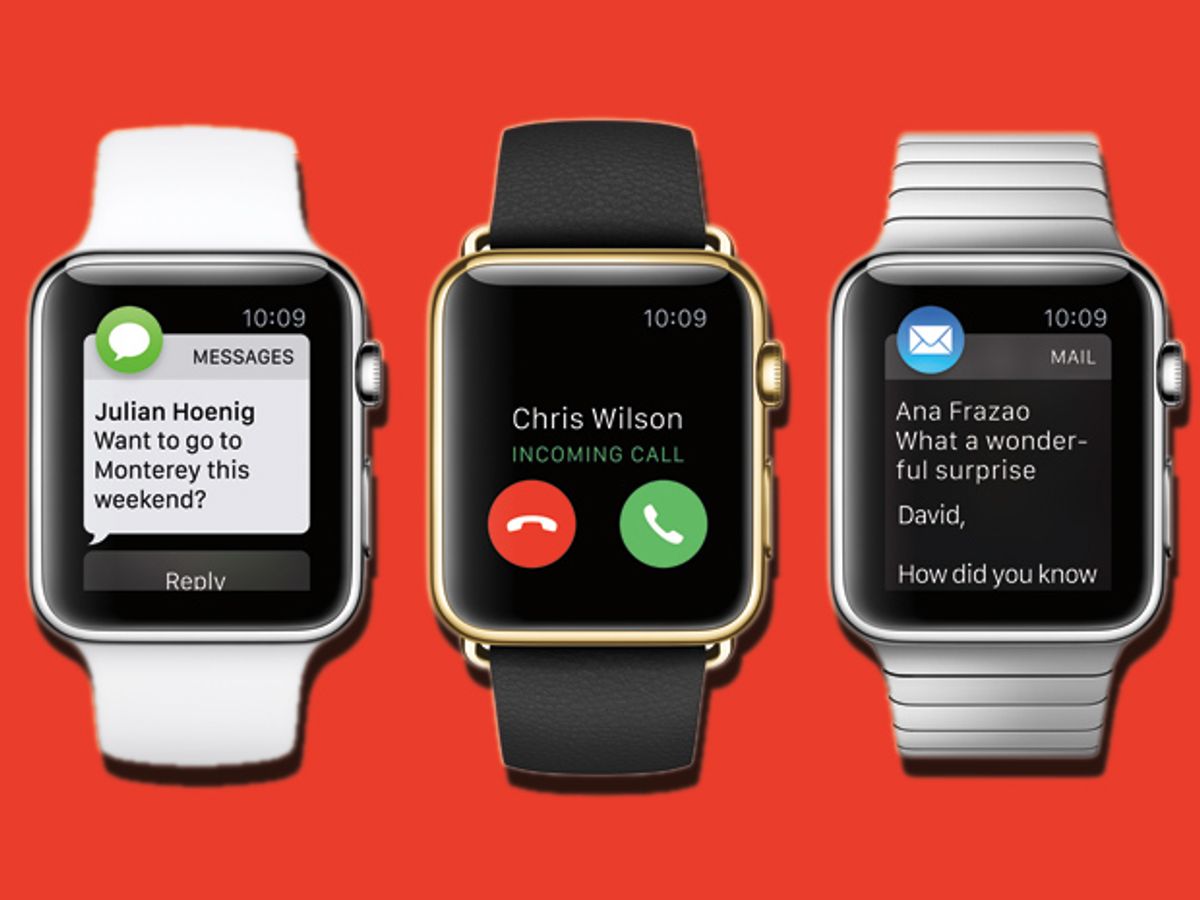Remember when you first saw an iPhone? Unless you’re an Apple fanboy, it was probably not at an Apple store, but instead was during a business or social event. Someone pulled an iPhone out of his pocket to “check a message,” and quickly drew a crowd as he demonstrated a few fun features. And then we all tried swiping through his family photos—swipe was new then, and it was pretty amazing. And, for a while anyway, the guy with the iPhone was the most popular person in the room.
It’s been a while since tech has given the early adopter access to that kind of conversation starter. Yes, there was a time when fitness bands had a cool factor, before everyone had one, but you couldn’t easily demonstrate a fitness band, and talking about your step count just wasn’t that engaging.
But today Apple announced that on 24 April its latest crowd-magnet, the Apple Watch, will hit retail stores and the doorsteps of those who preorder the gadget. So this spring and summer, it’s going to be much easier to start a conversation in Silicon Valley, expediting the formation of partnerships of all kinds. In the same way you can predict a bump in the birth rate nine months after a major power outage, I wouldn’t be surprised if there’s a bump in the birth of new companies and technologies after the introduction of this kind of geek magnet. It brings people together who otherwise might think they don’t have anything to talk about, and out of such synergies new ventures are often made.
The Apple watch isn’t that revolutionary; essentially, it brings many of alerts and apps from a smart phone to the wrist and includes the features of a fitness band.
Apple did add a new type of alert—the tap—to the phone’s repertoire of auditory signals; you can program your watch to tap you in a variety of ways when it gets certain messages, and you can combine the heartrate monitor with the tap to send your heartbeat from your watch to another watch. The tap doesn’t really increase the functionality of the gadget: for alerts, it’s not that much different than the current vibration on today’s phones, and does anybody really need to send someone their heartbeat? But in terms of the icebreaker factor, it’s brilliant: Hey, is that an Apple Watch? Can I feel it tap? And two watchwearers in a group can really wow observers by sending animated sketches back and forth, drawing on the touchscreen surface of the watch.
Also compelling, though again, not revolutionary, is the Dick Tracy aspect of lifting your watch and speaking into it to make a phone call—or talk to Siri. Apple CEO Tim Cook, speaking at the launch event, said “I’ve been wanting to do this since I was 5 years old.” He’s probably not alone.
The Apple Watch w ill cost $349, at the low end, for the average early adopter to live out this tech fantasy, and up to $10,000 to take it to the 18-karat gold, James Bond, level. However, flashing a gold Apple Watch isn’t likely to generate much more buzz than the standard version; at least initially the technology will be more attention-getting than the bling.
The useful features—the heartrate monitoring for fitness apps, the reminders to get up out of your chair and move, the ApplePay, the calendar and email alerts, the basic timetelling, and “call a car” (Uber today, perhaps an Apple Autonomous Car in the future)—aren’t going to be the reasons people buy the Apple watch. It’s the tapping, and the sketching, and the Dick Tracy’ing that’ll make it fly off the shelves, at least in Silicon Valley.
(For more on the sensors inside the Apple Watch, see “Apple Watch’s Wristful of Sensors and MEMS”.)
Tekla S. Perry is a senior editor at IEEE Spectrum. Based in Palo Alto, Calif., she's been covering the people, companies, and technology that make Silicon Valley a special place for more than 40 years. An IEEE member, she holds a bachelor's degree in journalism from Michigan State University.



